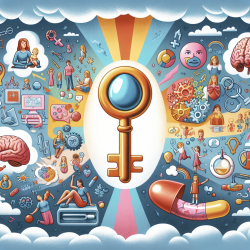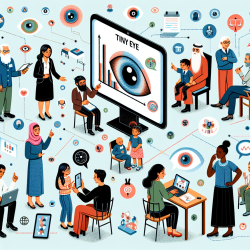Understanding the Impact of Conditioning on Dolphins: A Lesson for Practitioners
In the world of speech-language pathology, practitioners are always looking for innovative ways to enhance therapeutic outcomes for children. Interestingly, a recent study on dolphins in Sarasota Bay, Florida, provides insights that can be applied to our field. The research, titled "Food provisioning increases the risk of injury in a long-lived marine top predator," explores how human interactions, specifically food provisioning, impact the behavior and health of dolphins. These findings can guide us in understanding the importance of environment and conditioning in therapy.
The Study: A Brief Overview
The research investigated the effects of food provisioning on bottlenose dolphins. It was found that dolphins conditioned to human interactions through food provisioning were more likely to suffer injuries. This conditioning is learned behavior, often transmitted socially within the dolphin population. The study utilized a comprehensive dataset spanning over 45 years, involving more than 32,000 dolphin group sightings and over 1,100 individual dolphins.
Key Findings and Their Implications
Here are some significant findings from the study:
- Conditioning Increases Risk: Dolphins conditioned to human interaction were more likely to be injured. This is akin to how certain environmental factors can increase risks for children in therapy.
- Social Learning: Conditioning was found to be a learned behavior, spread through social interactions. This highlights the importance of peer influence and social learning in therapeutic settings.
- Environmental Factors: While the study did not find a direct link between human exposure and conditioning, it emphasized the role of environmental factors, such as prey availability, in influencing behavior.
Applying These Insights to Therapy
As practitioners, we can draw parallels between the study's findings and our work with children:
- Environmental Conditioning: Just as dolphins are conditioned by their environment, children are influenced by their surroundings. Creating a supportive and positive environment can enhance therapeutic outcomes.
- Social Influence: Peer interactions play a crucial role in a child's development. Encouraging positive social interactions can facilitate learning and growth.
- Risk Management: Understanding potential risks in a child's environment allows us to mitigate them effectively, much like managing the risks associated with human-dolphin interactions.
Encouraging Further Research
The study underscores the need for continued research into how environmental and social factors influence behavior. For practitioners, this means staying informed about the latest research and incorporating evidence-based practices into therapy. By doing so, we can create better outcomes for children, much like how informed wildlife management can protect dolphin populations.
To read the original research paper, please follow this link: Food provisioning increases the risk of injury in a long-lived marine top predator.










